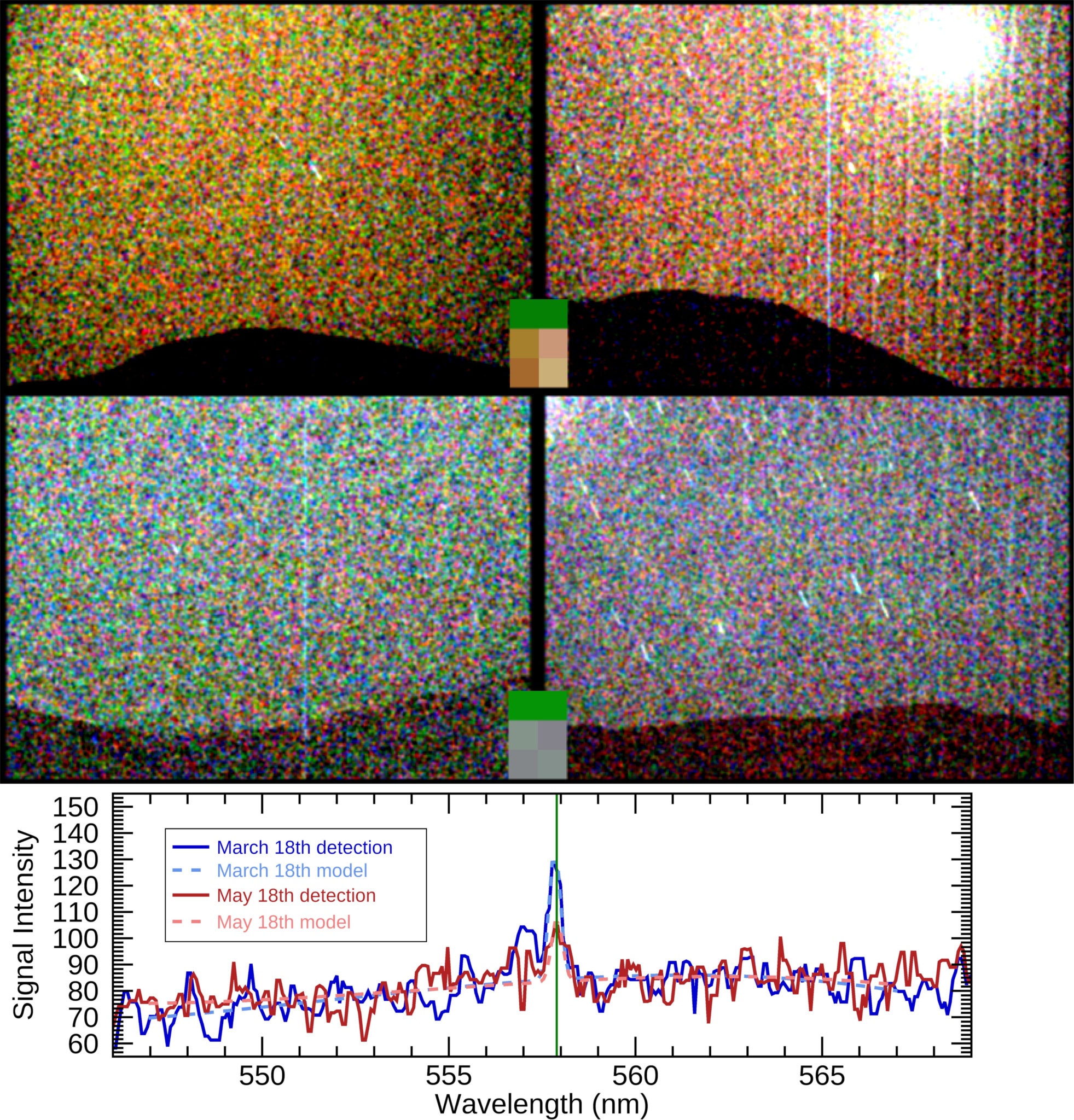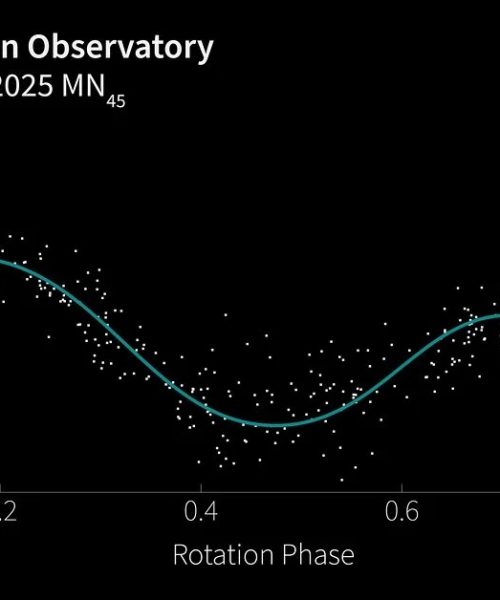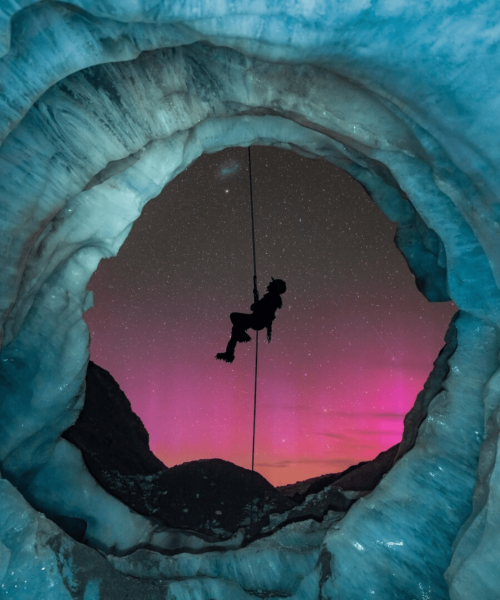Just like Earth, our cosmic neighbor Mars sometimes has auroras dance across its night sky. In March 2024, NASA’s Perseverance Mars rover imaged visible-light auroras for the first time during a major solar flare and coronal mass ejection. That exciting discovery confirmed that future astronauts on Mars could see (and feel) the impacts of the aurora and opened up some exciting new research possibilities.
Scientists now believe that they have the tools to predict an aurora’s green glow in the night sky above Mars. Today in Helsinki, Finland, planetary scientist Elise Wright Knutsen of the University of Oslo presented a second photo of a Martian aurora at the Europlanet Science Congress–Division of Planetary Science (EPSC–DPS) Joint Meeting.
“The fact that we captured the aurora again demonstrates that our method for predicting aurorae on Mars and capturing them works,” said Knutsen, who also was the science lead for the first image of a martian aurora seen from the ground.

How the aurora works
Aurorae appear in the night sky when a burst of energetic particles in a solar wind are hurled out by a coronal mass ejection on the sun. These particles collide with molecules in the upper atmosphere of Earth’s magnetic field, causing them to glow. It’s sort of like the sun is burping at us, only instead of a noise, we see bright lights dance across the night sky.
Aurora activity is typically highest at the North and South Pole, but even places in the topics like Key West, Florida have been lucky enough to see this natural wonder.
On Earth, they come in a variety of colors depending on which types of atoms are present. According to the Canadian Space Agency, green auroras occur when charged particles collide with high concentrations of oxygen molecules in Earth’s atmosphere. Red auroras are less common than green. They are more associated with intense solar activity and are caused by solar particles reacting with oxygen at higher altitudes (about 180 to 250 miles high). Rare blues and purples occur when the solar particles interact with the nitrogen in Earth’s atmosphere.
On the Red Planet, aurorae glow green because the charged particles collide with oxygen atoms high above Mars. They may be bright enough that astronauts on Mars could spot them with their naked eye. Here on Earth, it’s usually helpful to have a telescope or even a phone camera filter to really see the aurora.
Since Mars does not have a magnetic field to direct the charged particles to the magnetic poles the way Earth does, aurorae here are seen all across the planet as a glow in the sky that is spread out like a thin fog. Scientists call this a diffuse aurora.
Aurorae on Mars have previously been observed from orbit in ultraviolet light by the European Space Agency’s (ESA) Mars Express. NASA’s MAVEN missions have also detected auroras glowing in ultraviolet light that is invisible to the human eye.
The addition of visible-light detections like the ones taken in March 2024 offer more for aurora predictions. While they are stunning to look at, the same radiation that causes the aurora could be dangerous to astronauts without warning. Having a warning system for when a powerful solar storm will hit Mars is important if humans are ever going to survive on the planet’s rocky surface.
[ Related: 15 captivating photos of auroras seen from space. ]
The tricky business of predicting an aurora on Mars
On Mars, the observations to predict an aurora have to be planned and uploaded to the rover three days after a CME bursts out of the sun in the direction of Mars. This means a lot of guesswork as to which solar storms will produce an aurora.
“Predicting aurora down to an exact minute is incredibly challenging! But there are different challenges on Earth and Mars,” Knutsen tells Popular Science. “On Earth the aurora is limited to a specific area, it has a relatively narrow shape, and it is highly variable. But we can keep checking new data on Earth and adjust our forecast and consequent observations. On Mars there is no way for us to adjust our observation time.”
With that three day lead time, scientists have to lock in a time for only a few minutes. However, aurorae on Mars cover the entire planet, and last for several hours.
“So there is more margin for error, so to speak,” says Knutsen
Between 2023 and 2024, Knutsen and her team made eight attempts to view the aurora with Perseverance’s SuperCam and MastCam cameras. They found this to be a true process of trial and error.
On their first three attempts, they did not see anything. However, when analyzing the conditions that NASA’s MAVEN and the ESA’s Mars Express orbiters measured, they realized that the velocities of those CMEs were likely not fast enough to create a solar wind disturbance on Mars.
“The faster the CME, the more likely it is to accelerate particles towards Mars that create aurorae, and the stronger the solar wind disturbance around Mars, the more likely it is that those particles make it into Mars’s nightside atmosphere,” said Knutsen.
To adjust, they targeted more intense CMEs. That’s when they found their first two detections of aurorate. The final three CMEs did not produce aurorae, even though they had all of the signs that the team was looking for. However, just because there were no aurorae does not mean all was lost.
“The most surprising part after three failed attempts, was that we did succeed in the end! Which meant that our strategy for predicting and our observation technique all worked,” says Knutsen. “It is incredibly gratifying when you work from a quite concrete hypothesis, and your results finally match your expectations.”
There are still a lot of mysteries locked inside the aurora’s glow both at home and on Mars. In the future, the team hopes to keep comparing the timing of solar wind and the arrival of solar energetic particles at Mars to further understand how they work–and better prepare future astronauts.






